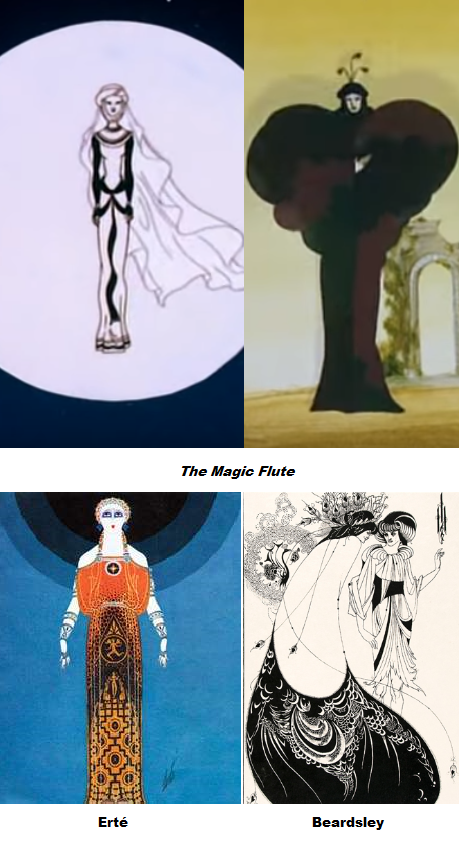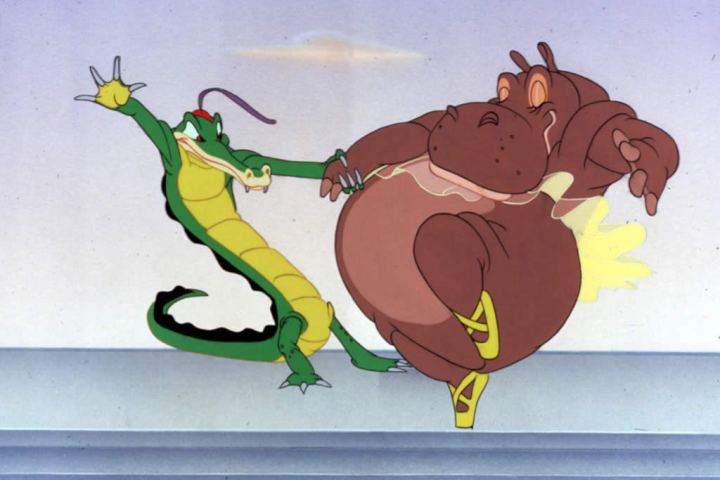The location of A Midsummer Night’s Dream (from “Shakespeare: The Animated Tales,” 1992) is purportedly ancient Greece (specifically Athens, during the preparations for the wedding of Theseus and Hippolyta), but the fairies who populate the nearby woods are all drawn from the Celtic and Germanic folklore of northern Europe, which makes this a natural segue from the tale of Fionn mac Cumhaill; and the hostility between the estranged king and queen of the fairies and their struggle for control over the Indian prince resembles the hostility between Mozart’s Sarastro and the Queen of the Night, and their struggle for control over Pamina, from before that.
The artistic style for this one reminds me a bit of Gahan Wilson.


